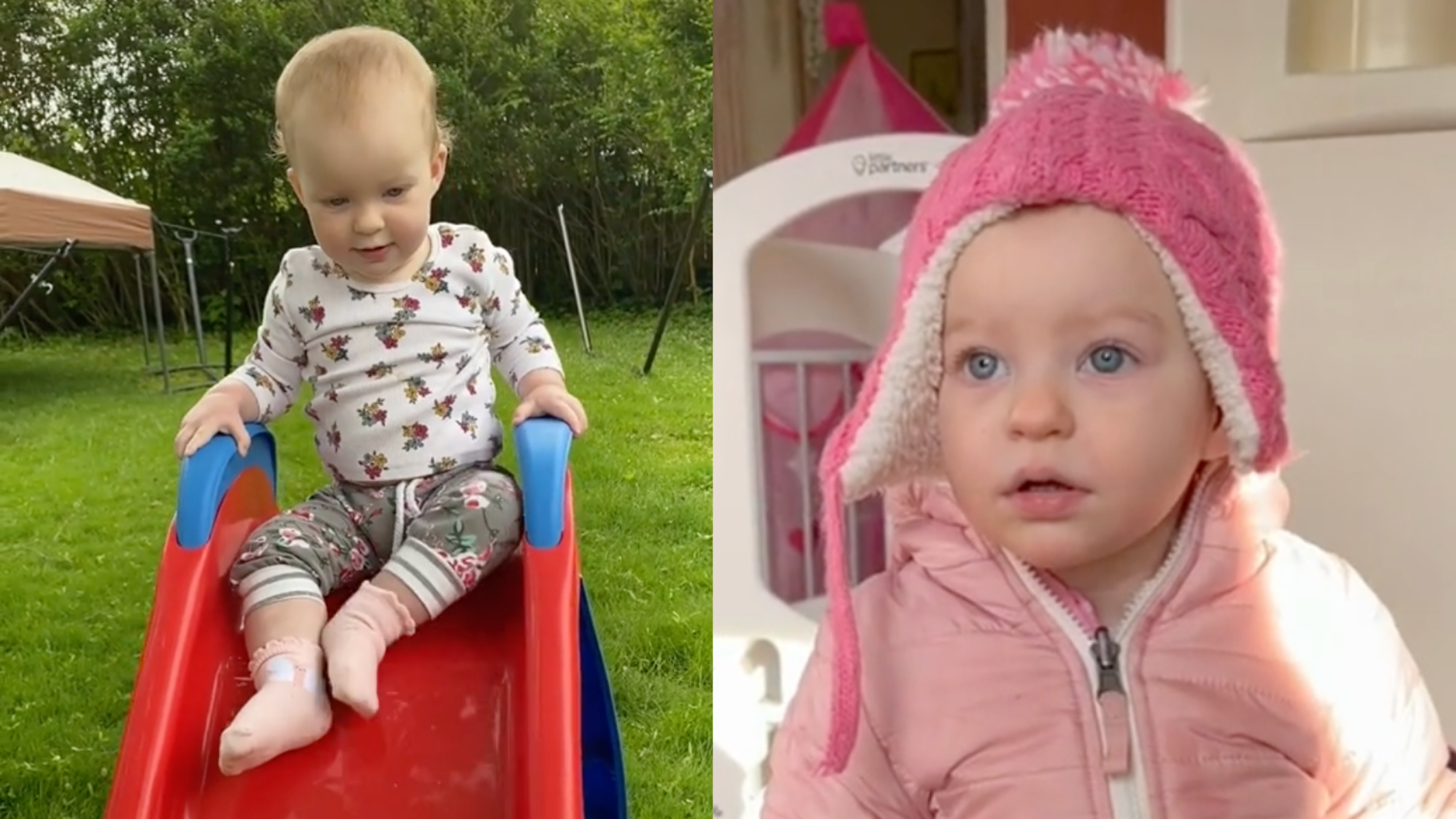
A mom has the internet to thank after helpful strangers pointed out that something was wrong with her child. Cassie, who goes by @travelingthelunaverse on TikTok, regularly shares video of her daughter Luna, an almost 2-year-old who has autism spectrum disorder and is nonverbal. She says commenters' special warnings after a video she shared last year allowed her to get her daughter some help before it was too late.
The catch was made after Cassie shared video of Luna a year ago.
Cassie often shares videos about Luna’s autism diagnosis and tips and tricks for traveling with a young child, but in a video from February 3, she explained that an older video had attracted a lot of attention.
“I shared this video of a [Luna] on a little red slide on my social media pages,” she said in the video. “I received a few messages saying: ‘I don’t want to freak you out but that kind of looks like a seizure.’"
"That’s when I first learned about absence seizures."
Cassie showed the video and a few others like it to Luna’s doctor and he instructed the pair to go to a neurologist. The neurologist ran tests on Luna, as well as blood work, an electroencephalogram, and an MRI.
“The first EEG showed no abnormal activity but her neurologist still believed she was having seizures,” Cassie said. Luna is scheduled to have a second EEG after her birthday in April.
In September, Luna’s MRI showed that a 5 mm mass was growing on her pineal gland.
According to Encylopaedia Britannica, the pineal gland is the source of melatonin, which plays a central role in the regulation of circadian rhythm.
“At first this was diagnosed as a pineal cyst but we got a second opinion and the neurosurgeon said, ‘well, we can’t really tell on the imaging. You need another MRI with contrast to be able to clarify between a cyst and a tumor,’” Cassie explained in the video.
Luna had another MRI in December that wasn’t exactly successful, but did show that the mass had grown.
In an update, Cassie explained that Luna’s absence seizures were getting more severe.
“Her absence seizures are progressing into mild chronic seizures which are more jerky,” Cassie explained on February 8. “If this cyst is what is causing these seizures, it makes sense that they’re not shown on the EEG because this is the deepest [part] inside of her brain, it’s the center of the brain where the pineal gland is.”
Thankfully, on February 10, Cassie revealed that the mass in Luna’s head was not a tumor.
“Luna’s MRI results were posted and and it is a 5 mm pineal cyst,” she said. “For now, it is not a tumor. It is a cyst and life is good.”
The mom said she decided to share her story because before Luna’s absence seizures were flagged, she had no idea that there was anything off.
“Before learning about them, I had no idea that a seizure could be something different than your body falling to the ground and jerking,” she explained in a video from February 5. “All I knew about seizures were the stereotypical seizures.”
But Luna had completely different symptoms.
It usually looks like Luna is zoning out or is deep in thought when her absence seizures are happening. The Johns Hopkins Hospital website states that absence seizures "causes you to blank out or stare into space for a few seconds." They are most common in children and are offset by a period of hyperventilation, but don't leave any long-term issues.
“She’s completely unresponsive to touch, sound, and vision,” Cassie wrote in the video’s caption. “Her eyes also flutter.” The seizures tend to last anywhere from 10 to 15 seconds, although Cassie did clarify that sometimes Luna is just taking in sensory information, but it's good for other parents to know what an absence seizure looks like, just in case.
“I’m not a professional at all but I’m just sharing our story and our journey. I hope sharing our story helps someone else,” she said.




